Some jobs have higher risks of life-threatening injuries and illnesses than others – loggers, steelworkers, and truck drivers, for example. There’s no list of the most dangerous jobs globally that include medical professionals, including doctors, nurses, and respiratory therapists! But we live in abnormal times because of the COVID-19 pandemic, and the medical profession has become one of the most dangerous professions.
Medical professionals, particularly doctors, nurses, and emergency medical technicians, have a significantly higher risk of infection due to their increased exposure to sick patients. In the United States, one in every seven COVID-19 infections is a health worker, a troubling trend considering the extreme strain the nation’s healthcare system is under.

Nonetheless, healthcare workers and other medical professionals have continued to perform their roles and responsibilities despite the risks! We consider them our unsung heroes, and we can’t thank them enough for their hard work, thoughtfulness, and commitment.
COVID-19 and Healthcare
Of course, the COVID-19 pandemic isn’t the first and won’t be the last time for healthcare workers and medical professionals to step up to the plate! Every day, they use their extensive knowledge and skills to treat injuries and illnesses, improve patients’ quality of life, and save lives. Every public health crisis, from the 1918 flu pandemic, the HIV/AIDS outbreak, and the Ebola scare to the COVID-19 pandemic, they have risked their health and lives, too.
Why do they do it despite these risks? First, theirs is a profession and a vocation that demands 100% commitment to their sworn duty. Theirs isn’t just a job but a personal conviction that strengthens their resolve to serve despite the risks. Second, theirs is a job that pays well and, in many instances, their salaries and benefits outweigh the possible risks.
Medical Professionals are in HIGH demand!
Indeed, medical professionals are among the highest-paid professionals in the United States! They enjoy steady earnings and excellent career stability because of their high job demand. Healthcare facilities, including hospitals, are usually open 24/7 and, as such, workers can get full hours and even overtime.
Furthermore, they have plenty of opportunities for career advancement through a combination of education, training, and work experience. Compared with other industries, the medical industry encourages career advancement within a short period provided that one is willing to put in the hours of study, internship, and fellowship training.
Diverse Career Specializations
Healthcare workers and medical professionals also enjoy the benefit of diverse career specializations. From the outside, it would seem that every specialization has its sub-specializations! For example, pediatricians can choose to become a general pediatrician or choose a sub-specialty, such as pediatric rheumatology, pediatric infectious diseases, or pediatric nephrology.
Therein lies the beauty of being part of the medical field – you can make your mark, whether as a general practitioner or a specialist. No matter your choice, you will likely enjoy a comfortable life with your salary and benefits package.
Stress on the Healthcare Worker
Of course, it isn’t just about the monetary compensation! Keep in mind that healthcare workers and medical professionals experience extreme stress in their jobs, too. So what keeps them going despite the stressful nature of their work?
For one thing, they have the opportunity to make a positive difference in other people and their communities. Every healthcare career has its spiritual rewards that feed the soul and provide fuel to keep going, day in and day out. Doctors and nurses treat their patients and save lives; occupational therapists help patients improve and maintain skills necessary for daily life; medical scientists conduct experiments to improve human health; radiation therapists work with doctors to treat cancer through radiation.
Indeed, we cannot imagine a world without them! With and without a pandemic, they are vital members of our community, public health guardians, and the heroes we should celebrate.
For another thing, they enjoy the stimulating work environment – and you will, too, if you’re the type who likes challenges. Every day is different – no dull moments, no repetitive cases, and no boring days. There will always be a surprise around the corner, a challenge down the bend, a patient whose condition unexpectedly changes.
With the combination of high pay, challenging work environment, and soul-satisfying rewards, no wonder that the medical industry continues to gain favor among millennials.
Is Medical School Right for You?
But we must also warn readers that becoming a medical professional isn’t easy! Indeed, medical school is widely considered as among the most challenging educational paths for many reasons.
First, paying for four years of medical school usually requires substantial financial cost – and we’re not talking about pre-med education that, in itself, is also financially challenging. The Association of American Medical Colleges explains that the median cost of attending a four-year education at a public medical school is $256,000 (2019-2020); it’s $338,000 for private medical school education.
At Columbia University’s Vagelos College of Physicians and Surgeons in New York City, the tuition and fees for 2019-2020 were $68,886 (sticker price), the highest in the country. In contrast, students at New York University’s Grossman School of Medicine, also in New York City, didn’t pay any tuition but paid $3,950 in fees for the same school year. This is because NYU offers full-tuition scholarships for all of its Doctor of Medicine students no matter their financial need and academic standing.
Second, medical students deal with the toughest curriculum in higher education. Memorizing thick workbooks with complicated terms and definitions, transitioning to clinical training followed by graduate medical work and specialist training, and studying for classes and exams are just a few of their challenges.
Surprisingly, most medical students who drop out cite non-academic reasons, such as being unprepared or overconfident, family issues, illness, and wrong career choice. In a four-year medical program, the dropout rate ranges between 15.7% and 18.4%.
With all these challenges, you may be having second thoughts about pursuing a medical career. But we hope that you will pursue your medical dreams! You will find that the hard work pays off and pays well eventually.
25 of the Highest-Paying Jobs in the Medical Industry
- Speech-Language Pathologists
- Genetic Counselors
- Occupational Therapists
- Radiation Therapists
- Medical Scientists
- Physical Therapists
- Biomedical Engineers
- Veterinarians
- Medical and Health Services Managers
- Physician Assistants
- Advanced Practice Registered Nurses (APRNs)
- Optometrists
- Podiatrist
- Pharmacists
- Dentists
- Pediatricians
- General Internal Medicine Physicians
- Family and General Practitioners
- Psychiatrists
- Prosthodontists
- Orthodontists
- Obstetrician and Gynecologist
- Oral and Maxillofacial Surgeons
- Surgeons
- Anesthesiologists
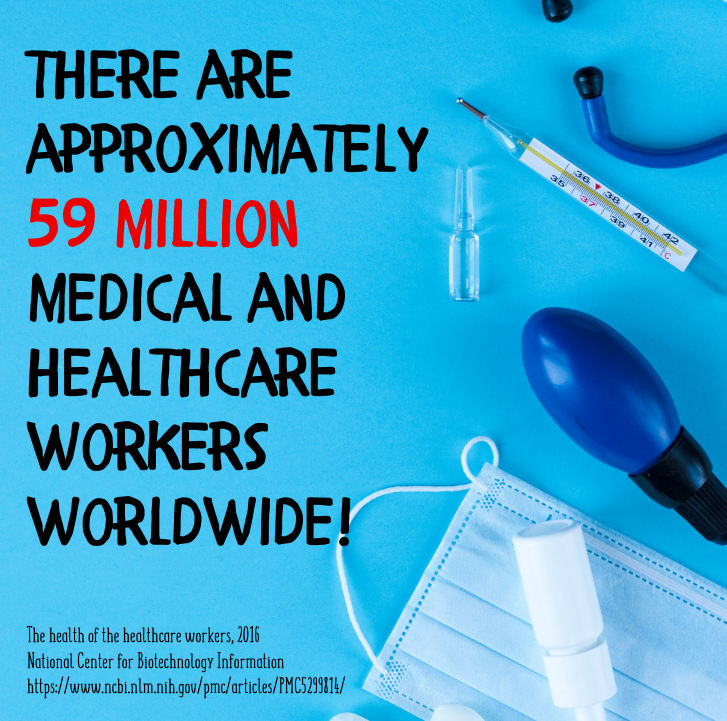
#25 Speech-Language Pathologists

Also called speech therapists, speech-language pathologists contribute toward a better quality of life among people with language, speech, and swallowing disorders resulting from hearing loss, developmental delay, autism, stroke, brain injury, or Parkinson’s disease. Their main role is the diagnosis and treatment, and prevention of language and swallowing disorders in children and adults. Their typical roles include:
- Evaluate the levels of language, speech, and swallowing difficulty
- Determine the treatment options based on the initial assessment
- Make and implement the patient’s personalized treatment plan, such as making sounds, improving the voice, and strengthening the muscles for speaking and swallowing
Speech therapists also perform administrative tasks, including maintaining patient records, tracking treatment progress, and sending billing information. There are several specializations, such as working with a specific age group or focusing on specific issues, such as patients with communication issues due to brain injury and strokes. They work with other professionals, including physicians, social workers, occupational and physical therapists, and teachers, to achieve the best possible patient outcome.
Their credentials include a master’s degree with courses in speech and language development, alternative communication methods, and age-specific speech and swallowing disorders, as well as a supervised clinical experience. The master’s degree program should be accredited by the Council on Academic Accreditation (CAA), requiring a speech therapist’s state license.
#24 Genetic Counselors

Genetic counselors assess an individual or a family’s risk for various inherited conditions, including congenital disabilities and genetic disorders. Their job includes providing information about genetic conditions and appropriate support for the patients and their families and other healthcare professionals. Their duties include:
- Interview patients and their families to secure comprehensive information about their medical histories
- Evaluate the medical history, genetic information, and other factors to identify their risk for certain genetic disorders
- Make extensive written reports about the matters above for patients and physicians
- Determine and discuss testing options and treatments, including their risks and rewards
- Provide counseling for patients and their families to enable them to make informed decisions
Genetic counselors use laboratory tests, particularly DNA testing, in the evaluation of genetic risks. Most of them choose a specialization, such as cancer, pediatric, and prenatal genetic counseling, but all of them must possess compassion on the job. They must also have good communication, critical thinking, and decision-making skills.
Their education includes a master’s degree in genetics or genetic counseling with coursework like epidemiology, developmental biology, and public health, as well as clinical rotations. Their master’s degree must be from an Accreditation Council for Genetic Counseling-accredited program, and the American Board of Genetic Counseling should issue their certification for validity.
#23 Occupational Therapists
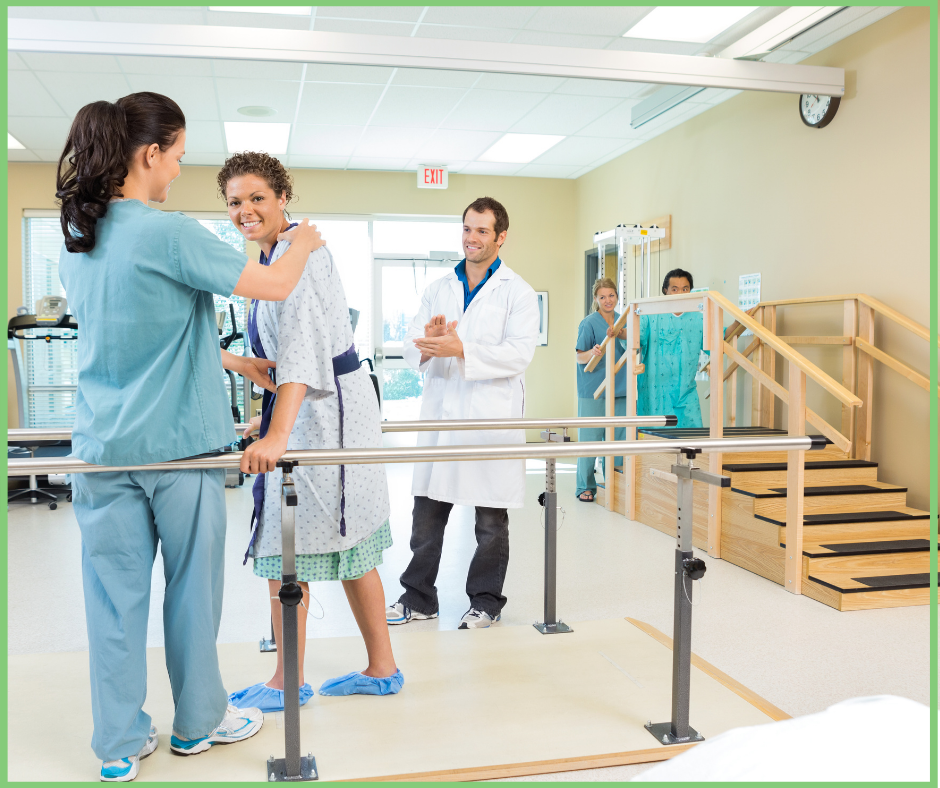
Occupational therapists become valuable partners of ill, injured, and disabled patients in their journey toward recovering, improving, and maintaining their daily life skills. People with cerebral palsy, for example, benefit from occupational therapy through the use of adaptive equipment like leg braces and eating aids, which allow them to be more independent. Occupational therapists perform the following duties:
- Review patients’ physical condition and medical history through interviews and observations
- Evaluate patients’ needs concerning occupational therapy
- Create individualized treatment plans with specific goals and activities
- Provide professional assistance to patients with various disabilities in the performance of daily tasks, such as brushing teeth or getting dressed
- Demonstrate exercises for pain relief and mobility
- Recommend special equipment and provide instructions on their proper use
They can work with both children and adults and schools, healthcare facilities, and workplaces. Many of them work with infants and toddlers with developmental delays, too, for early intervention therapy. Their most important skills include adaptability, compassion and patience, and excellent communication.
Most occupational therapists hold a master’s degree from a program accredited by the Accreditation Council for Occupational Therapy Education. They all have a state license, which requires passing the National Board for Certification in Occupational Therapy-administered exam and taking continuing professional education classes. They may also specialize in one of the American Occupational Therapy Association-approved specializations like mental health and pediatrics.
#22 Radiation Therapists

Radiation therapists are at the frontlines of the fight against cancer and other diseases. Their work typically includes oncology teams consisting of radiation oncologists, oncology nurses, and medical physicists. Their main job is in administering radiation treatments while their related duties include:
- Work with doctors in determining the exact treatment area on a patient’s body
- Explain the patient’s individualized treatment plan to the patient and his/her family members as well as answer questions about it
- Adopt safety measures to protect the patient and themselves from possibly dangerous levels of radiation
- Calibrate and operate the radiation machines, such as linear accelerators, during the radiation treatment
- Monitor any unusual side effect or reaction on the patient
- Keep detailed treatment records for each patient
Radiation therapists must be vigilant about the safety protocols related to radiation exposure and radioactive materials. They must then be detail-oriented, particularly in following exact safety measures, inputting precise measurements, and possess great interpersonal skills and physical stamina.
Most of them have an associate degree or a bachelor’s degree in radiation therapy, including physics, physiology, and radiation therapy procedures. Clinical experience is also a must, aside from formal education, to secure a state-issued license. Check the school for accreditation from the American Registry of Radiologic Technologists (ARRT).
#21 Medical Scientists

Medical scientists have vital roles to play in public health. They conduct research studies to improve overall health among humans, study the cause of health issues, diseases, and disorders, and develop new treatments for known diseases, such as diabetes. Their duties include:
- Design, conduct and evaluate research studies into human diseases, including their causes, prevention, and treatment
- Prepare and analyze data and samples about the causes, effects, and treatment of pathogens, toxins, and chronic diseases
- Create standards for pharmaceutical drugs, including their potency, methods of delivery, and doses in the interest of mass manufacture
- Make, test, and evaluate medical devices and aids
- Create public health programs in partnership with physicians, health departments, and other stakeholders
Due to the nature of their work, medical scientists are fluent in oral and written communication. They have to write research grant proposals for submission to public and private funding sources, present and defend their proposals and present their completed research projects.
Becoming a medical scientist requires a Ph.D. in life science, biology, or a medical degree. Some of them have a Ph.D. and an M.D. or a D.D.S (Doctor of Dental Surgery) or a D.O. (Doctor of Osteopathic Medicine) to their names! Some also have advanced nursing degrees. While many medical scientists don’t need licenses, those who are in private practice or who practice medicine during clinical trials must be licensed physicians.
#20 Physical Therapists

Physical therapists are a godsend, so to speak, for people who have difficulty mobility, movement, and pain due to injuries and illnesses. They are vital in the treatment and the rehabilitation and preventive care of patients with chronic conditions. Their job includes these tasks:
- Review patients’ medical history, including the notes made by their doctors, nurses, and other healthcare workers
- Determine patients’ degree of movements and functions through observations and interviews
- Create individualized patient plans with details regarding each patient’s goals and expected results
- Apply and demonstrate appropriate exercises, such as stretching maneuvers; use proper equipment, and perform hands-on therapy that will increase mobility and decrease pain and risk of injury to the patient
- Maintain records of patient progress and change the initial treatment plan as needed
Physical therapists work with both the patients and their families to ensure the best possible recovery and rehabilitation process. They work with diverse people, including children and adults, patients with injuries, neurological disorders, and physical defects. They must then possess dexterity, physical stamina, and resourcefulness as well as compassion and communication skills.
Their work demands a Doctor of Physical Therapy (DPT) degree from a Commission on Accreditation in Physical Therapy Education (CAPTE)-accredited program. They must also have a state license, which requires passing the Federation of State Boards of Physical Therapy-administered National Physical Therapy Examination. They may then choose a specialization, such as sports, orthopedics, and geriatrics, through the American Board of Physical Therapy Specialties.
#19 Biomedical Engineers

Biomedical engineers are among the smartest in the medical field with their extraordinary capacity to combine medical and biological sciences with engineering. Their hand can be found in every medical device, equipment, aid, computer systems, and software used in the healthcare industry. Their duties include:
- Design biomedical devices and equipment like body replacement parts, artificial internal organs, and diagnostic machines
- Install, maintain and repair biomedical devices and equipment, as well as train their users and provide technical support
- Determine the effectiveness, efficiency, and safety of biomedical devices and equipment
- Conduct studies on the biomedical systems of humans and animals concerning their engineering elements; chemists, medical scientists, and life scientists are also onboard these studies
- Write and publish technical reports and research papers, prepare presentations of their research to the medical and scientific communities, and make recommendations
Biomedical engineers choose from many specialty areas like bio instrumentation, biomechanics, and biomaterials. Some become postsecondary teachers and, thus, ensure that there will be more biomedical engineers in the future.
Their education credentials include a bachelor’s degree in bioengineering or biomedical engineering or a related engineering field like electrical and mechanical engineering. The coursework includes fluid and solid mechanics, biomaterials, and circuit design. There are no certification and licensing requirements, but career advancement requires an advanced degree, such as a master’s degree (MBA), a law degree, or a graduate degree for specialization purposes.
#18 Veterinarians

Veterinarians are one-of-a-kind on this list because they are the only ones who care for animals’ health. Their main duties are diagnosing, treating, and studying medical injuries and illnesses of animals, including pets and livestock. As such, their task includes the following:
- Examine animals to determine their overall condition and diagnose illnesses and injuries
- Provide treatment to animals, including stitching and dressing wounds, administering medications, and supervising treatment, including surgery in animal hospitals
- Test for and give vaccinations against diseases
- Advise animal owners about medical conditions and general care
- Euthanize animals
Like doctors, veterinarians also use numerous tools, technologies, and equipment like x-rays, ultrasound machines, and scalpels in the course of their work. As doctors to animals who must also work with their human partners, they must also possess strong communication, decision-making, problem-solving skills, compassion, physical stamina, and manual dexterity. Their specializations include companion animals, food animals, and food and safety veterinary medicine.
All veterinarians have a Doctor of Veterinary Medicine (DVM) degree, a four-year program with classroom, laboratory, and clinical rotation elements, from an accredited school of veterinary medicine. Most DVM students already have a bachelor’s degree and work experience with vet clinics and animals. Veterinarians must also ace the North American Veterinary Licensing Examination to secure a state license.
#17 Medical and Health Services Managers

Also called healthcare executives and administrators, medical and health services managers are in charge of planning, directing, and coordinating the wide range of medical and health services. Their workplaces are just as varied, from hospitals, clinics, and nursing homes to non-profit organizations to public health agencies. Their normal workday includes performing the following tasks:
- Develop goals and objectives for the department and the facility
- Recommend processes and procedures for the increase of effectiveness, efficiency, and safety in the delivery of healthcare services
- Ensure compliance with the laws, rules, and regulations among the employees and the facility in general
- Aid in the recruitment, training, and development, and supervision of employees
- Create work schedules for the department and teams
- Prepare the budget as well as monitor spending and evaluate compliance with the budget guidelines
- Maintain organized records of services
- Represent the department or facility during meetings, as needed
Healthcare administrators also work with other healthcare professionals, such as doctors, nurses, and medical technicians, in their duties and third parties like patients, investors, and insurance agents.
There’s no specific educational path toward becoming a healthcare executive. A bachelor’s degree in health management, business administration, or public health is typically a good start, but it also pays to have a master’s degree and relevant work experience for career advancement.
#16 Physician Assistants

Physician assistants are always part of a healthcare team, which can be composed of physicians, surgeons, and nurses. They are crucial people in all areas of medicine, from emergency medicine and family medicine to surgery and psychiatry. Their specific tasks depend on their workplace and area of specialization, but their general duties include:
- Interview patients for their medical histories and review their medical information
- Examine patients for signs and symptoms of injuries and illnesses
- Make orders for laboratory and diagnostic exams and interpret their results
- Diagnose patients’ illnesses or injuries
- Provide the appropriate treatment, including prescribing medications, immunizing patients, and setting bones
- Provide education and counseling for patients and their families
- Evaluate and record patient progress
Note that they are different from medical assistants who don’t practice medicine but only perform routine clerical and clinical tasks. As part of their work, physician assistants must also have above-average communication skills, a compassionate attitude, and a passion for service.
Physician assistants must have a bachelor’s degree, preferably focusing on science, and with patient care work experiences, such as a registered nurse, a paramedic, or an emergency medical technician (EMT). Most programs take at least two years of full-time study consisting of classroom, laboratory, and clinical rotation components; look for a program with accreditation from the Accreditation Review Commission on Education for the Physician Assistant, Inc. A state license, continuing education, and recertification exam are necessary for practice.
#15 Advanced Practice Registered Nurses (APRNs)

Nurse midwives, nurse practitioners, and nurse anesthetists are collectively known as advanced practice registered nurses (APRNs). While their specific scope of practice varies depending on where they work (i.e., state) and their specialization, they can provide both primary and specialty healthcare services. Their general duties include:
- Interview patients for their medical histories, signs, and symptoms, and other information, as well as record the information
- Perform physical examinations and patient observations
- Develop care plans for patients and make recommendations to existing care plans
- Make orders for diagnostic tests and, in some cases, perform these tests; analyze the test results and diagnose health issues based on them; and change care plans, as necessary
- Operate and monitor medical devices and equipment
- Administer medications and treatment to patients as well as evaluate their response and progress
- Educate and counsel patients and their families on health management
APRNs can be independent workers or work with a team, usually with physicians. Due to their nursing training, they share many similarities in their work with registered nurses except that their advanced training includes tasks typically reserved for doctors.
Their professional credentials include a registered nursing (R.N.) license and a master’s degree, a Ph.D. in the field, or a Doctor of Nursing Practice (DNP). They must also pass the national certification exam and possess an APRN license; each specialization has specific certification and license requirements. The certification bodies include the American Nurses Credentialing Center (ANCC), the American Academy of Nurse Practitioners Certification Board (AANPCB), and the Pediatric Nursing Certification Board (PNCB).
#14 Optometrists
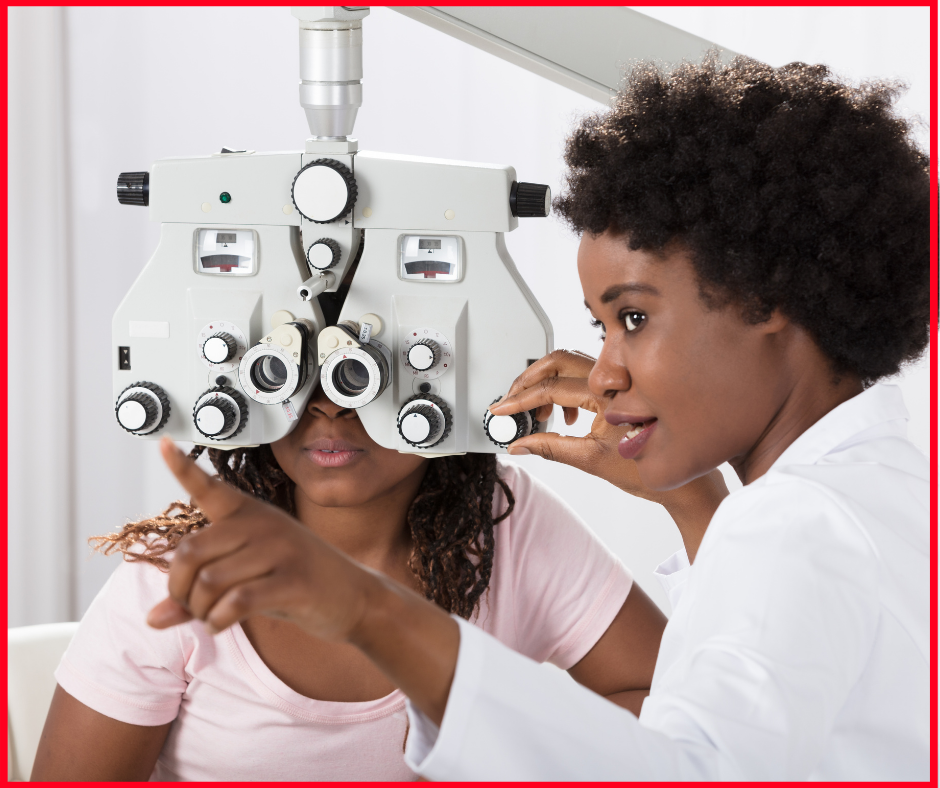
Optometrists focus on diagnosing and treating vision-related illnesses and injuries and the prescription of vision aids like eyeglasses and contact lenses. Their profession allows them to work independently or with other optometrists and ophthalmologists, teach and perform research in colleges, and work as consultants. Their typical duties include:
- Perform diagnostic tests to determine the level of vision in patients and analyze the test results
- Evaluate patients for underlying medical conditions resulting in vision problems, such as hypertension and diabetes
- Diagnose vision issues and eye diseases, such as nearsightedness, cataracts, and AMD
- Prescribe vision aids and medications, if the state law allows
- Provide treatments like low-vision rehabilitation and vision therapy
- Perform minor surgical eye procedures
- Give pre-operative and post-operative care
- Promote eye health through counseling, including an emphasis on the importance of general health and its effect on eyesight
Optometrists aren’t the same as opticians and ophthalmologists – opticians fit visual aids, and ophthalmologists specialize in eye health.
Optometrists are holders of a Doctor of Optometry (O.D.) degree and a state-issued license. Applicants to O.D. degree programs usually have a science-centric bachelor’s degree and must pass the Optometry Admission Test (OAT). After graduation, students should ideally complete a 1-year residency program and pass the National Board of Examiners in Optometry exam to secure a license. The American Board of Optometry issues a board certification for advanced training.
#13 Podiatrist
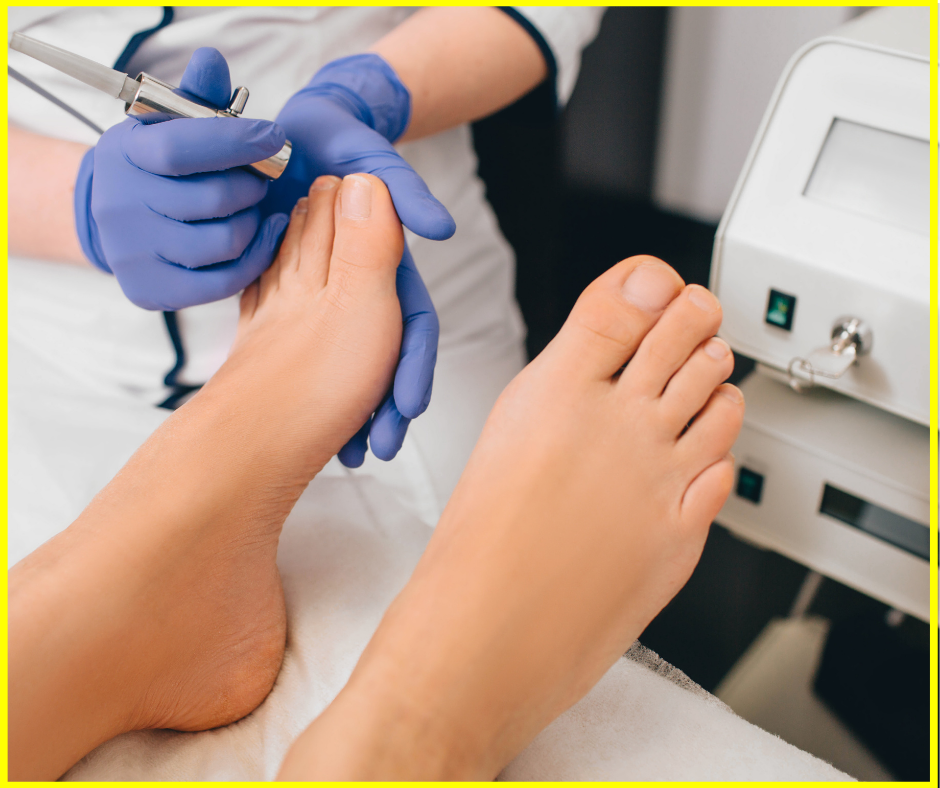
Podiatrists are popularly known as foot doctors, but they also treat the ankles and lower leg injuries and illnesses. Their job involves seeing patients with congenital disabilities in the feet and ankle, calluses, heel spurs, ingrown toenails, arthritis, and arch issues. They also treat feet, ankle, and leg issues associated with underlying medical conditions, such as diabetes, and perform surgeries on these parts.
Their general duties include:
- Evaluate the condition of the feet, ankles, and lower legs of patients; perform a physical and medical examination; and listen to their concerns and symptoms
- Use physical exams, diagnostic and laboratory tests, and other methods in diagnosing illnesses and injuries in the lower extremities
- Provide treatment options based on the diagnosis, which can include medications, orthotics, and exercises
- Perform surgeries, such as repairing fractures, removing bone spurs, and correcting deformities
- Refer patients to other specialists and coordinate their care
Podiatrists have a Doctor of Podiatric Medicine (DPM) degree from a Council on Podiatric Medical Education-accredited school; there are only nine accredited colleges as of 2017. Admission requires at least three years of undergraduate education and a passing grade at the Medical College Admission Test (MCAT). Aside from the academic coursework, students must also complete a three-year podiatric medicine and surgery residency (PMSR) program followed by compliance with requirements for a state license (compulsory) and a board certification (optional). The latter can be issued by one of the following: the American Board of Podiatric Medicine, the American Board of Foot and Ankle Surgery, or the American Board of Multiple Specialties in Podiatry.
#12 Pharmacists

Pharmacists perform vital services in the healthcare system through the proper dispensing of prescription and over-the-counter medications. They also offer expert advice in the safe and effective use of medicines and drugs, provide immunization services, and conduct health and wellness screenings. Their typical day at work includes these tasks:
- Fill prescriptions for doctor-prescribed medicines and regulated drugs
- Verify doctor instructions about the stated doses on the prescription
- Check for possible negative interactions between the prescribed drug and other drugs the patient is taking as well as possible side effects concerning the patient’s medical conditions
- Provide instructions about the proper use – when and how – of the medicine, inform the patient about potential side effects, and what to do in case it happens
- Administer flu shots and other vaccinations, if state law allows it
- Perform administrative tasks like completing insurance forms, supervising interns and pharmacy technicians, and keeping records
Pharmacists may also create customized medications, known as compounding, aside from dispensing medicines from pharmaceutical companies. Their workplaces determine their specific job titles, such as community pharmacists in chain drugstores, clinical pharmacists in healthcare facilities, and consultant pharmacists in insurance companies.
Their professional credentials include a Doctor of Pharmacy (Pharm.D.) degree from an Accreditation Council for Pharmacy Education (ACPE)-accredited school. Admission requirements include an undergraduate degree and passing the Pharmacy College Admissions Test (PCAT), but there are other routes to getting a Pharm.D. degree like a six-year bridge program. A state license will only be issued upon passing the North American Pharmacist Licensure Exam (NAPLEX) and the Multistate Pharmacy Jurisprudence Exam (MPJE) exams, among other requirements.
#11 Dentists
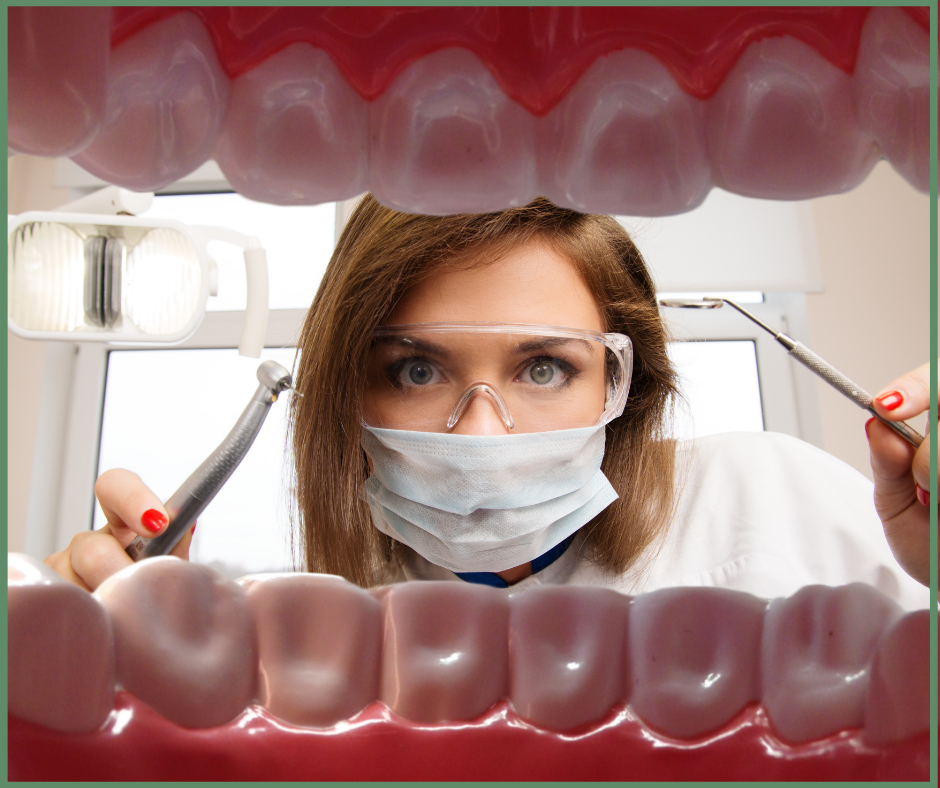
Dentists are known as teeth doctors, but their job also requires them to treat the gums, jaw, and other related parts of the mouth. Their primary role in the healthcare system is oral health and, as such, their typical day at the office includes the performance of these tasks:
- Remove tooth decay and fill in cavities
- Repair or remove decayed or damaged teeth
- Use diagnostic and laboratory exams to diagnose dental issues
- Place whitening agents, oral appliances, and sealants on teeth
- Prescribe antibiotics and other medications for the treatment of dental illnesses and injuries
- Take measurements and make models for dental appliances, such as braces and dentures
- Educate patients and their families about proper dental care
- Perform administrative tasks
Like other doctors, dentists use a wide variety of tools and technologies for the abovementioned tasks. These include x-ray machines, probes, scalpels, forceps, lasers, digital scanners, and mouth mirrors. They work with other dental professionals, such as dental lab technicians, dental assistants, and dental hygienists.
While state licensure requirements vary, most states require dentists to possess a Doctor of Medicine in Dentistry/Doctor of Dental Medicine (DMD) or a Doctor of Dental Surgery (DDS) degree; the accrediting agency for dental schools is the Commission on Dental Accreditation (CODA). Other licensure requirements include passing the written National Board Dental Examinations and other applicable state or regional exams.
#10 Pediatricians

General pediatricians provide medical care for specific cohorts – newborns and infants, children and teenagers, and young adults. Their job requires specialized knowledge and skills in diagnosing, treating, and preventing health issues specific to these cohorts. Their day includes seeing children of all ages and young adults who require treatment for common illnesses, infectious diseases, and minor injuries, among others.
Their duties include:
- Perform physical examinations, take medical histories, and note signs and symptoms in patients
- Order diagnostic and laboratory tests, interpret their results, and evaluate their impact on patient care
- Diagnose illnesses and injuries typically associated with children, create and implement treatment plans, and evaluate patient progress
- Address special medical needs among children and young adults
- Perform routine examinations like wellness check-ups and administer immunizations
Pediatricians are also valuable partners in the reduction of infant and child mortality. Their rigorous education and training prepared them for the challenges of their profession, and the former includes completing a bachelor’s degree (pre-med), a medical degree, and the completion of internship and residency programs. Indeed, pediatricians spent at least 13 years of their lives on an arduous academic journey – and that’s not including years spent on pursuing a fellowship, getting a license, and securing board certification.
#9 General Internal Medicine Physicians
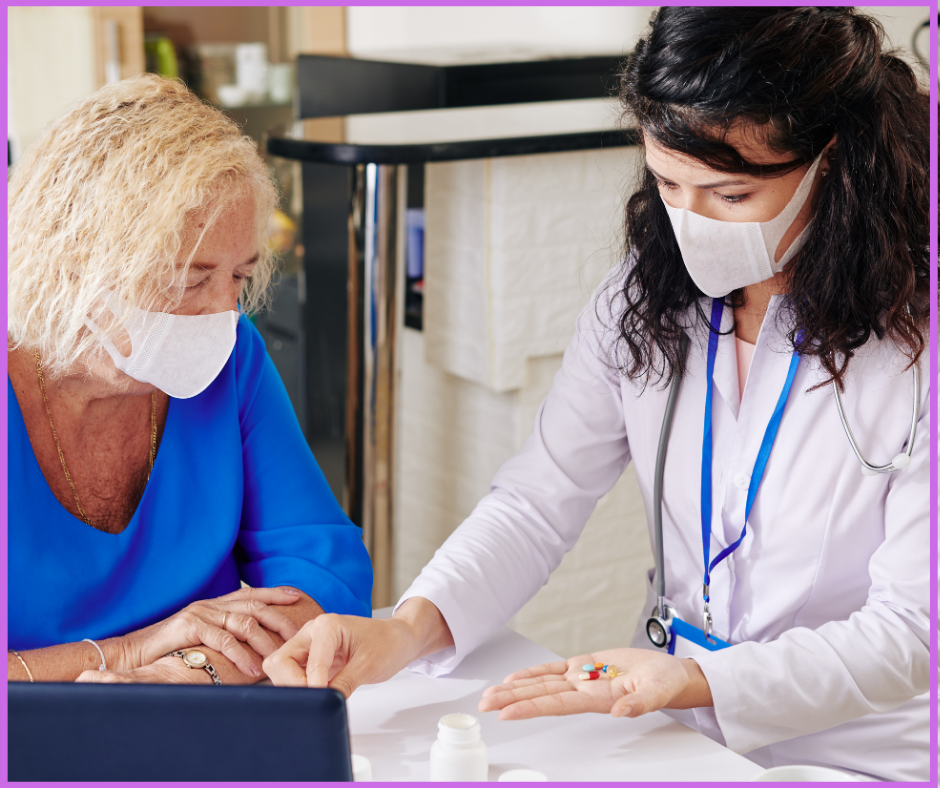
Also called internists, general internal medicine physicians specialize in diagnosing, treating, and preventing a wide range of internal diseases, including diabetes and hypertension. Their expert knowledge and skills are applied in diverse settings, from hospitals and clinics to nursing homes, hospices, and residential homes. Many of them are also involved in postsecondary teaching and research and development.
Their typical duties include:
- Consultations with patients for their medical history, signs, and symptoms, and other health concerns
- Diagnose and treat chronic and acute illnesses, such as heart disease, hypertension, diabetes, and bacterial and viral infections
- Prescribe and administer medications and therapy, among other medical interventions
- Explain the medications, procedures, and test results in a treatment plan
- Monitor the progress of patients and reevaluate their treatment plans as needed
- Provide health and wellness advice to patients and their families or caretakers
- Refer patients to other specialists
- Perform administrative tasks, such as maintenance of patient records and preparation of official health documents
Internists typically have a bachelor’s degree, a Doctor of Medicine (M.D.) or a Doctor of Osteopathic Medicine degree, and 3-7 years of internship and residency under their belt. They have also passed the internal medicine certification examination, possess a valid and active medical state-issued license, and have a certification from the American Board of Internal Medicine (ABIM).
#8 Family and General Practitioners

Family and general practitioners have licensed physicians who diagnose and treat and aid in preventing illnesses and injuries that commonly occur in families and the general population. Due to their work’s general nature, many of them refer patients to specialists for further diagnosis and treatment. Their typical duties include:
- Consult with patients about their medical history, signs and symptoms, and other health concerns
- Order diagnostic and laboratory tests, interpret their results and make adjustments to initial diagnosis
- Design a treatment plan, which can include medications, exercises, and other therapeutic interventions, based on the test results
- Address concerns about patient well-being and health
- Provide counseling and information regarding the maintenance of overall health and hygiene
- Refer patients for specialized care when necessary
Due to their focus on family health, many family and general practitioners have regular, long-term patients. Many of their patients come from the same families in 2-3 generations.
Like all physicians, they also undergo rigorous education and training. They also have a bachelor’s degree, a medical degree, and several years of internship and residency training on their resume. Many of them obtained their undergraduate and medical degrees in a dual program lasting 6-8 years. They have also passed the standardized national licensure exam for doctors and secured a state license as well as secured board certification (optional).
#7 Psychiatrists

Psychiatrists are called mind doctors because their specialization is mental health – matters of the mind. They are also experts in the diagnosis, treatment, and prevention of behavioral, emotional, and psychological disorders and substance abuse disorders. They are also trained to evaluate these disorders’ physical and mental aspects and, thus, recommend a whole-of-body approach to treatment and management.
Their duties include:
- Conduct psychiatric evaluations, which include physical exams, medical history, psychological testing, interviews, and observations, as part of the assessment and screening process
- Diagnose the psychological condition, inform the patients and their families, and recommend an appropriate treatment plan
- Prescribe and, in some cases, administer medications
- Evaluate and monitor the patients’ response to medications and other therapeutic interventions, adjust the treatment plan, and inform the patients about these changes
- Provide crisis intervention in acute cases
- Collaborate with other healthcare specialists and stakeholders to implement the treatment plan
Physicians must have extensive knowledge of the APA’s Diagnostic and Statistical Manual of Mental Disorders (DSM-5) and their medications, such as antidepressants, stimulants and hypnotics, and psychotherapy. They must also have a medical degree and psychiatry residency, a license to practice medicine in their state, and current board certification, as well as a valid DEA registration. They also pick an area of specialization, such as child and adolescent psychiatry, geriatric psychiatry, or addiction psychiatry.
#6 Prosthodontists

Prosthodontists are dentists who specialize in treating and managing oral and facial issues involving the restoration of missing teeth and jaw structures. They are experts in improving the function and appearance of weak, broken, damaged, and misshapen teeth. Thus, their expertise lies in the:
- Placing crowns or caps on the teeth to improve their strength and appearance
- Placing veneers on teeth and conceal their defects
- Bleaching teeth and other whitening services to improve the appearance of discolored teeth (yellowish or brownish due to lifestyle factors, such as a poor diet, poor oral hygiene, and cigarette and alcohol abuse)
- Installing dental implants and dentures
- Filling in gaps and changing the shape of teeth through advanced bonding technology
Aspiring dentists are well-advised to earn a bachelor’s degree with strong science training, such as biology, as their pre-dental courses. They must pass the Dental Admission Test (DAT) administered by the American Dental Association (ADA) before being admitted to dental school. The four-year program results in a Doctor of Dental Surgery or Doctor of Dental Medicine degree upon completion. It’s one of the prerequisites for getting a license, completing a three-year post-doctoral residency training, and obtaining a board certification from the American Board of Prosthodontics.
Prosthodontists are the go-to dental specialists for teeth replacements, and, as such, they are different from dentists and orthodontists, among other dental specialists. But they work with general dentists and specialists in the treatment, management, and prevention of diverse dental issues.
#5 Orthodontists
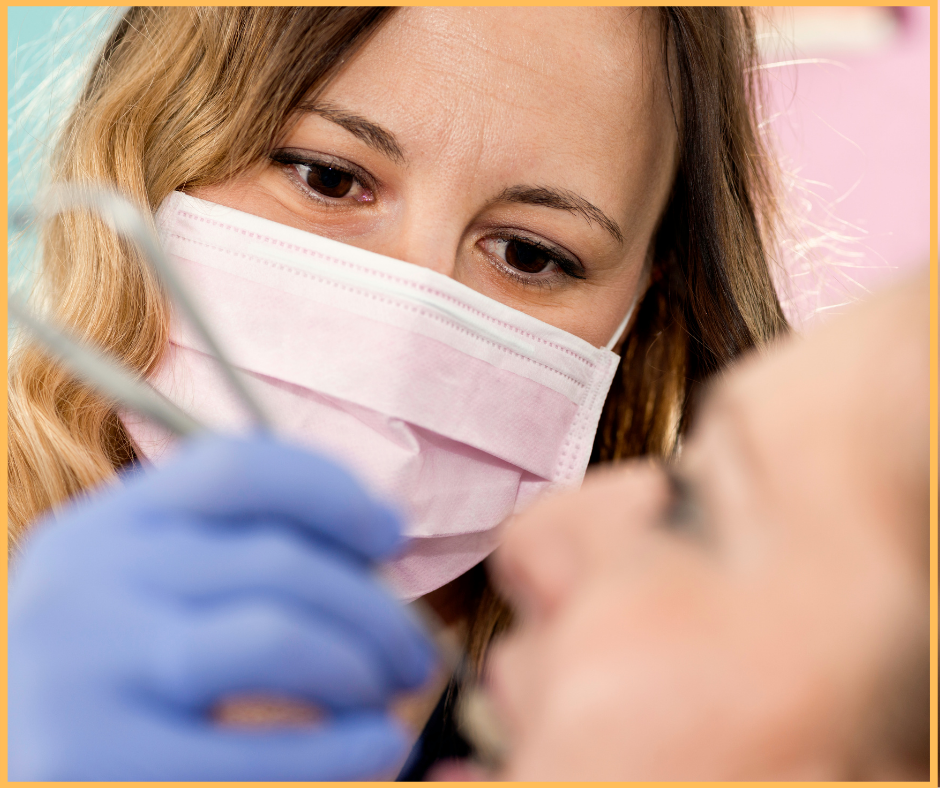
Orthodontists are dental specialists whose expertise lies in the correction of teeth and jaw misalignments. Indeed, parents are well-advised to get their children around the age of seven to an orthodontist to check for possible irregularities! This is because teeth and jaw misalignments can cause troubling dental health issues, such as speech defects and chewing difficulties. Their responsibilities include:
- Consultations with patients regarding their medical history and dental issues
- Order diagnostic and laboratory exams, such as x-rays, to determine dental issues and other possible health concerns
- Develop an individualized patient treatment plan based on the diagnosis, such as occlusion
- Fit orthodontic appliances and make adjustments when necessary
- Provide instructions to assistants on orthodontic techniques and procedures
- Schedule regular check-ups to ensure that the orthodontic appliances are effective
- Educate patients and their families about orthodontic treatment as well as good oral health and hygiene practices
- Coordinate with other healthcare professionals for better treatments
Orthodontists address issues like anteroposterior deviations, overcrowding, and aesthetic concerns like a bad bite. They recommend dental appliances, such as braces and archwires, headgear and face masks, and retainers for these issues.
Their professional credentials include a bachelor’s degree, a Doctor of Dental Surgery or Doctor of Dental Medicine degree from an accredited school, and a state license. They can also choose to pursue board certification from the American Board of Orthodontics as a way to advance their career and get expert recognition.
#4 Obstetrician and Gynecologist

Emphasis must be made that obstetrics and gynecology are different medical specializations. While obstetrics involves caring for pregnant women and delivering babies, gynecology involves treating, managing, and preventing health issues affecting the female reproductive system. Obstetricians-gynecologists specialize in both areas and provide a wide range of healthcare services, including prenatal check-ups, STI testing, and infertility treatments.
In line with these services, they perform the following responsibilities:
- Conduct physical examinations, get a medical history and perform tests, such as breast and pelvic exams
- Diagnose health issues based on the abovementioned tests and prescribe appropriate treatments
- Consult with pregnant women about their current condition, ensure their safe delivery and provide post-partum care
- Perform surgeries, such as Cesarean sections and hysterectomies, as well as fertility treatments
- Conduct routine check-ups on patients
- Educate patients about the treatment of reproductive health issues and their prevention
- Collaborate with other healthcare professionals
Obstetrician-gynecologists are also licensed medical doctors with a medical degree and a state license. Furthermore, they have undergone four years of residency training and secured their certification or state license from the American Board of Obstetrics and Gynecology.
#3 Oral and Maxillofacial Surgeons

Oral and maxillofacial surgeons have specialized knowledge and skills in dental implant surgery, facial injury treatment and cosmetic surgery, and wisdom tooth management and extraction. Their training also allows them to offer advanced services, including removing cancerous tumors in the head, neck, and throat; correction of airway issues in obstructive sleep apnea; and surgery to correct lip and tongue defects (e.g., cleft lip and palate).
Their typical responsibilities include:
- Diagnosis of health issues through interviews, physical examinations, and diagnostic tests
- Formulation of treatment options and discussions of their pros and cons with patients and their families
- Perform surgical procedures for the correction of head, neck, and ear issues, such as congenital craniofacial malformations, chronic infections, and catastrophic injuries
- Prescribe pre-operative and post-operative care
- Work with other medical professionals to improve patient outcomes
Oral and maxillofacial surgeons usually earn a bachelor’s degree and a dental degree followed by 4-6 years of residency training. They can also choose to pursue fellowships resulting in their specializations, such as pediatric maxillofacial surgery or craniomaxillofacial trauma. The industry’s certifying body is The American Board of Oral and Maxillofacial Surgery.
#2 Surgeons

Surgeons have extraordinary fine motor skills and manual dexterity, which are crucial in their operations’ success. They are exceptionally skilled medical professionals who can perform diverse procedures, including ablation, anastomosis, angioplasty, debridement, decompression, excision, grafts, implants, transplantation, reduction, and stent placement. They can also pursue sub-specialties like bariatric surgery, cardiothoracic surgery, and neurosurgery, to name a few.
Their duties include but aren’t limited to:
- Diagnosis of illnesses or injuries in patients through physical exams, medical history, and observation
- Plan for the best surgical procedure as part of a treatment plan
- Advise patients and their families on the risks and rewards of surgery
- Perform surgical procedures, follow established techniques and use appropriate tools
- Lead a team of healthcare workers
- Conduct research into surgical tools and techniques
Surgeons will subject themselves to no less than 13 years of rigorous education and training – and that’s for general surgery alone! Those who want to pursue a sub-specialty must spend several more years in training in addition to their bachelor’s degree, medical degree, intern and residency training, and license and board certification. Suffice it to say that surgeons are among the most respected medical professionals because of their intelligence, fortitude, passion, and thirst for continuing education.
Note: Surgeons usually take national and state exams, such as the U.S. Medical Licensing Exam (USMLE), as part of their licensing requirements. The American Board of Surgery issues Their board certifications, increasing their status and employment opportunities in the medical industry.
#1 Anesthesiologists
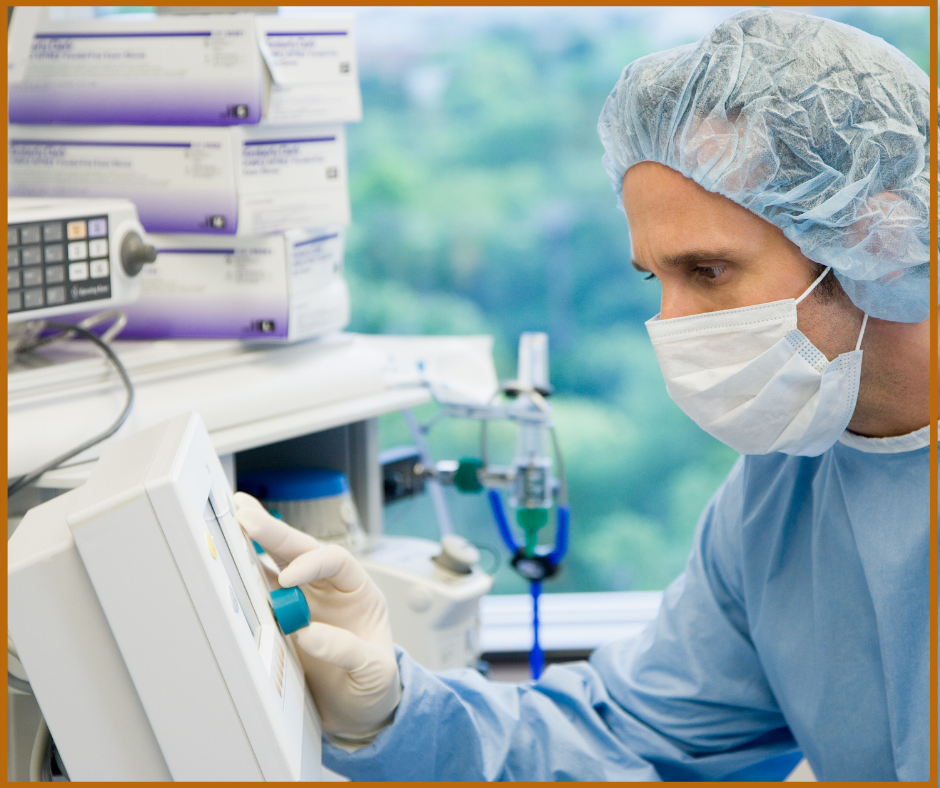
The American Society of Anesthesiologists defines anesthesiology as the “practice of medicine dedicated to the relief of pain and total care of the surgical patient before, during, and after surgery.” As such, anesthesiologists work with other healthcare professionals, including surgeons and nurses, in ensuring individualized, effective, efficient, and safe pain management plans. Their duties include:
- Working with surgeons in planning the surgical procedures
- Administering pain relief medication before, during, and after surgical procedures, such as Caesarian sections
- Informing patients about anesthesia-related risks
- Monitoring the vital signs of patients during medical procedures
- Approving the use of local, regional, and general anesthetics and sedatives
- Supervision nurse anesthetists and anesthesia assistants
- Complying with hospital procedures and standard medical protocol
Did you know that anesthesiologists are involved in approximately 90% of surgical procedures done with anesthetics every year in the country? They are also involved in critical and emergency care, particularly in trauma cases, and in providing breathing and circulation support for patients. These can include airway and cardiac resuscitation, pain control, advanced life support, and patient stabilization.
Anesthesiologists also undergo rigorous academic education and training before they can practice their specialized skills. They have a bachelor’s degree as a pre-med training and a medical degree, which can take at least eight years. They must pass the U.S. Medical Licensing Examination (USMLE), participate in a four-year residency program, and obtain their state license. They can then pursue certification from the American Board of Physician Specialties (ABPS) and the American Board of Anesthesiology (ABA) and a fellowship.
